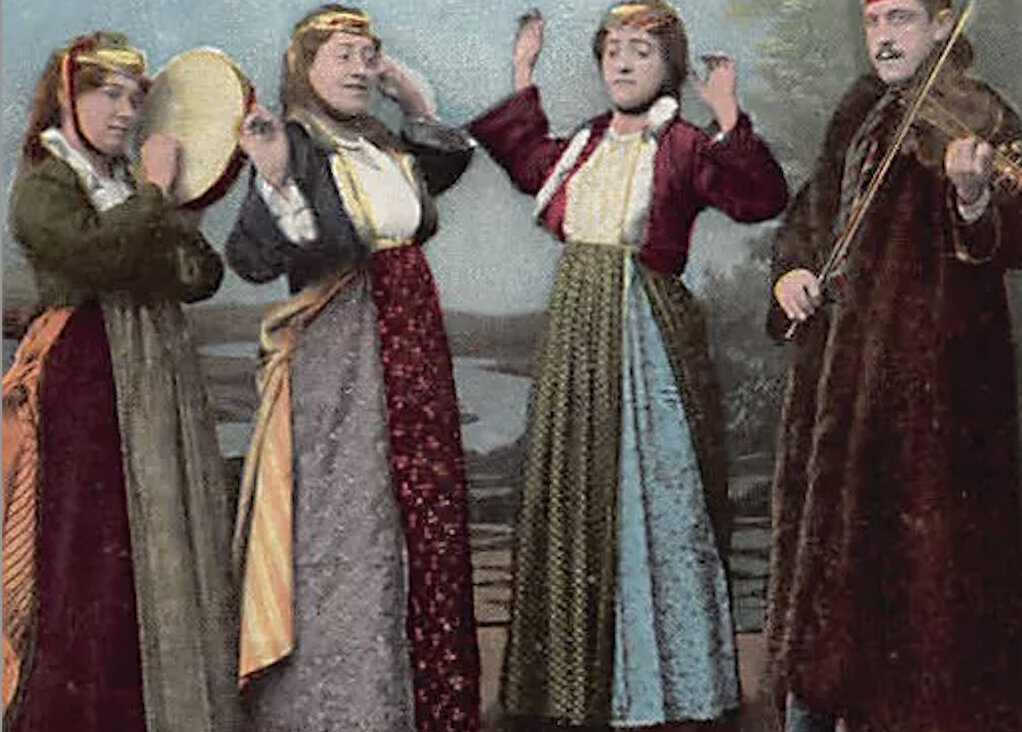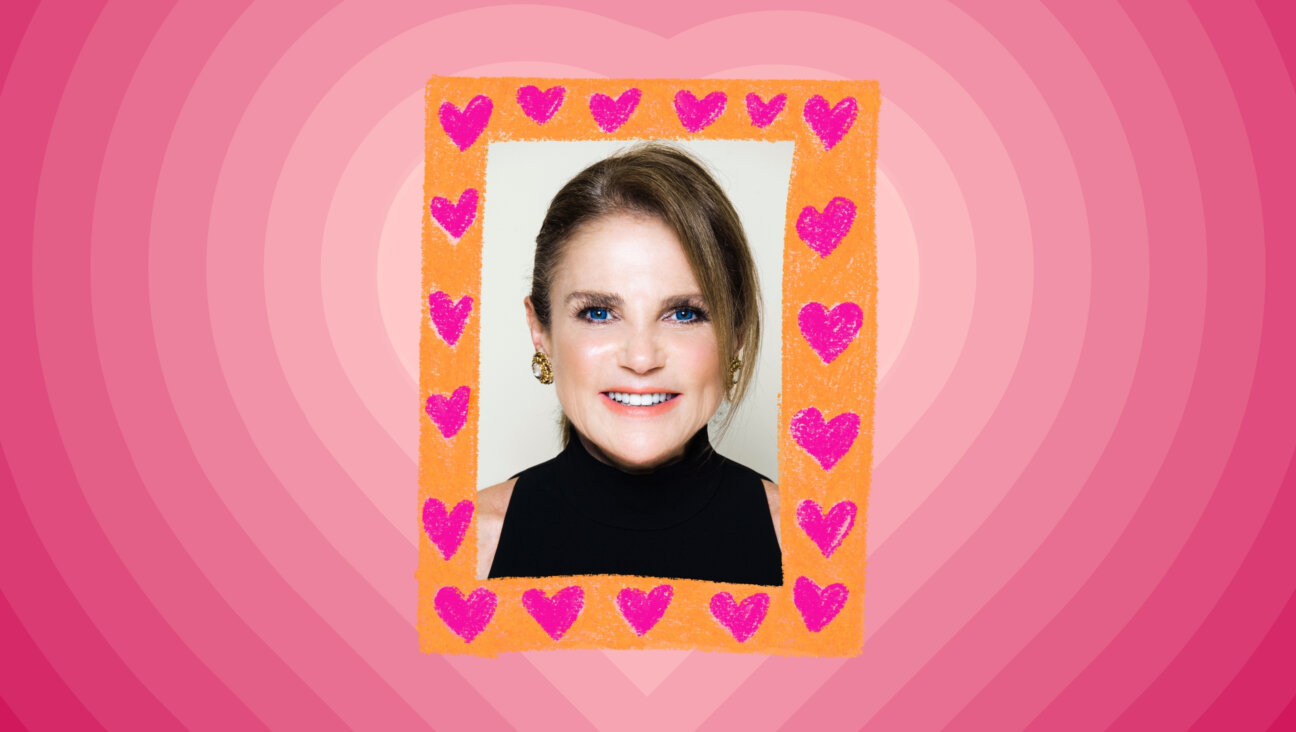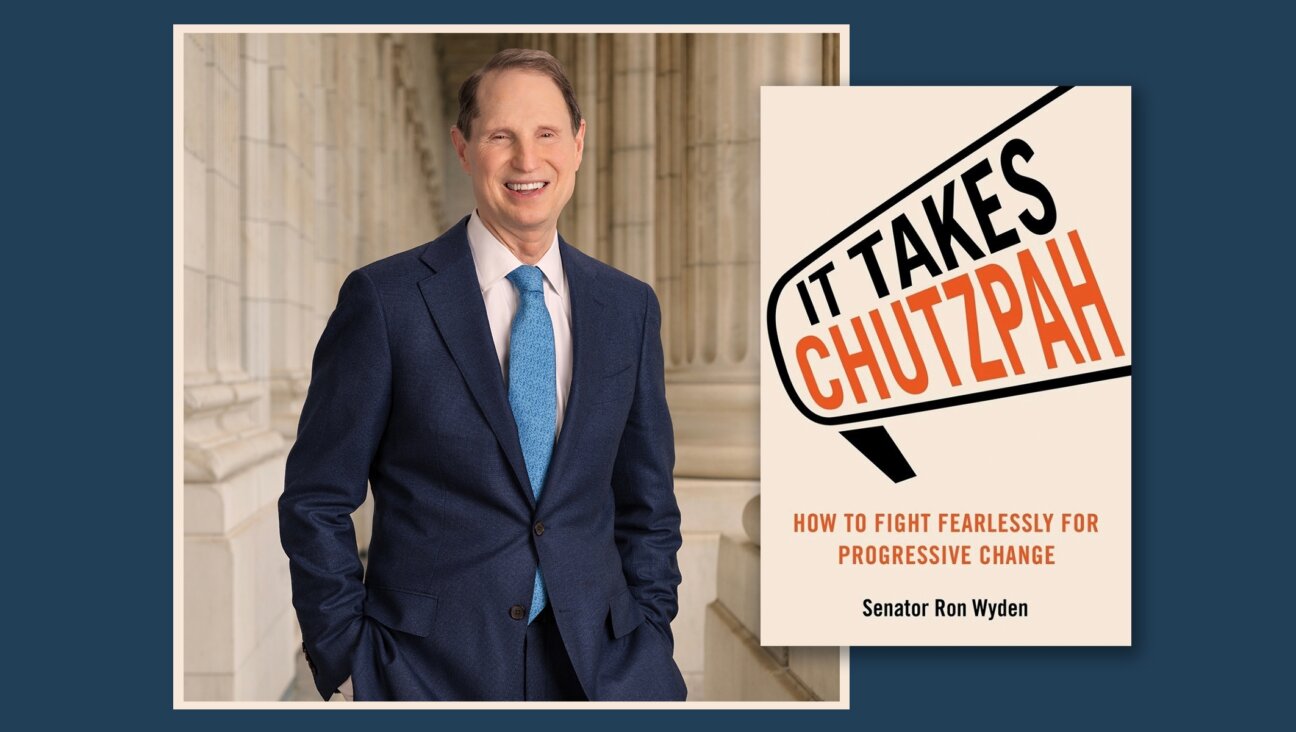Just how Jewish is Betty Boop?
Born on Aug. 9, 1930, the iconic cartoon character has both animated and real-life Yiddish ancestors
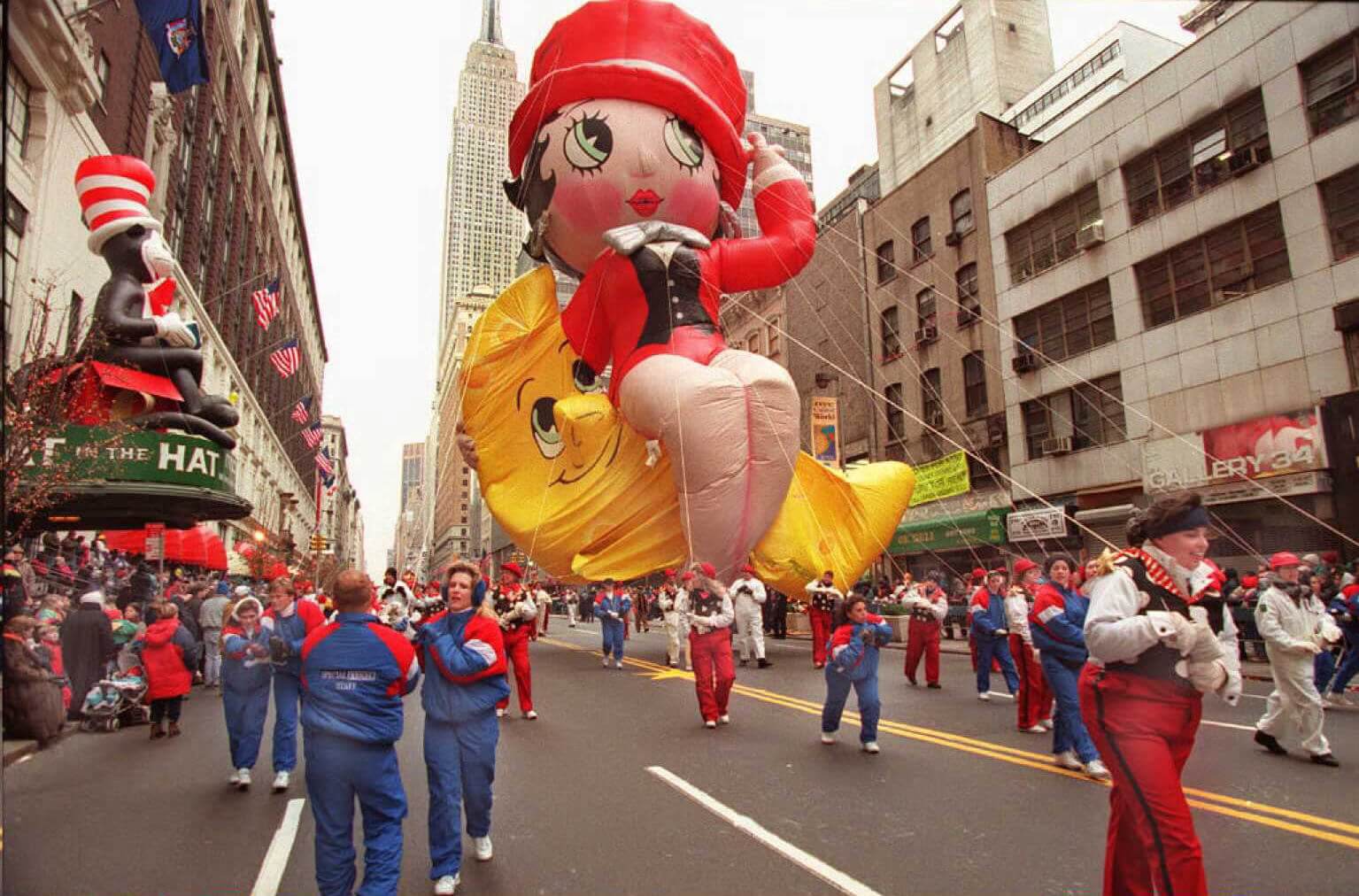
Betty Boop balloon flies past Macy’s during the 1995 Thanksgiving Day parade. Photo by Getty Images
Betty Boop, the iconic scat-singing cartoon flapper with a giant head and tiny dress, made her debut on Aug. 9, 1930, in the animated short “Dizzy Dishes.” Like many other characters at the time, she heavily reflected the Jewish background of her creators.
She was created by Max (Majer) Fleischer, a Krakow-born Jew from Brooklyn, who together with younger brother Dave founded the Fleischer Studios in 1929. The Fleischers were pioneers of animation and at the time the only major competitors to Walt Disney.
Everything Disney was not
Fleischer Studios were everything Disney was not. They were based in New York (later Florida, as is Jewish custom), not California. And instead of sweet fairytales, they created cartoons that were modern, urban, scruffy, sardonic, political, often ethnic and occasionally suggestively Jewish.
Rather than cuddly animals and winsome royals, their characters tended to be exaggerated humans like Koko the Clown and Betty Boop, along with comic strip adaptations. It was the Fleischers who gave Popeye super-strength derived from spinach and Superman the ability to fly instead of leap tall buildings in a single bound.
Between 1929 and 1932, Fleischer Studios produced and distributed through Paramount Pictures a series of 42 black-and-white “Talkartoons,” the first animated talkies. They were shown in movie theaters before feature films and were aimed largely at adult audiences.
The seventh cartoon, “Dizzy Dishes,” first shown on Aug. 9, 1930, included an unnamed side character, created by Max Fleischer and animator Grim Natwick. She a singer in a strapless minidress with her garters peeking out. Though she was part poodle, it didn’t matter. She was fun, sassy, sexy and she stole the show. A star was born.
The Jazz Age woman
She was brought back and soon made fully human, the first such female character in animation. Given the name Betty Boop, she became the lead of the Talkartoons and in 1932 was given her own series, which continued until 1939 and included 90 cartoons. Her “boop-oop-a-doop” became the catchphrase of the vibrant, independent American woman of the Jazz Age. She became the most famous sex symbol in animation (at least until Jessica Rabbit), dubbed in her theme song “Queen of the Animated Screen.”
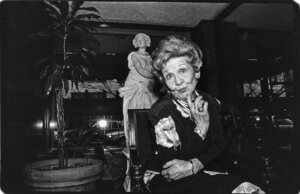
Boop was originally voiced by actress Margie Hines and later by Mae Questel, a Jewish actress from the Bronx and Boop lookalike. It was Questel who gave Boop her distinctive sound, tinged with a New York accent. She even voiced Boop’s cameo in 1988’s “Who Framed Roger Rabbit.”
Contrary to the popular social media memes and widespread erroneous reporting, Betty Boop was not based on Baby Esther (Esther Lee Jones) or other Black performers, though she clearly reflected Jazz Age culture. She likely was inspired, in part, by white Broadway star Helen Kane, who even tried suing the Fleischers (it’s possible that Kane borrowed from Esther, so there might be some DNA in there).
Vaudeville connection
Boop’s squeaky voice, playfully suggestive attitude and scatting were also staples of vaudeville performers. In 1932’s “Stopping the Show,” Boop riffed on Jewish vaudeville star Fanny Brice’s (born Fania Borach) famous schtick, “I’m an Indian” — explicitly, next to Brice’s picture — singing in a heavy Yiddish accent, “Oy yoy yoy yoy, I’m an Indian boy.” (Questel later played alongside Barbra Streisand in 1968’s “Funny Girl,” which was loosely based on Brice’s life.)
In 1932’s “Minnie the Moocher,” the most artistically ambitious of the Boop cartoons (with Cab Calloway Rotoscoped in as a singing walrus ghost), she upsets her parents, obvious immigrants with thick European accents, by refusing to eat the traditional German foods her mother prepared, hasenpfeffer (rabbit stew) and sauerbraten (marinated meat).
A first-generation American
Their ethnicity is ambiguous; the accents are more German than Galician and the foods aren’t kosher. Some have claimed that the father wears a yarmulke, but it’s a bald spot, with a single hair sticking out like an antenna. Either way, Boop is clearly a first-generation American child of European immigrants, something the Fleischers knew from personal experience.
In other cartoons she’s unmistakably from the Depression-era Lower East Side. 1931’s “Minding the Baby” and 1932’s “Any Rags” and “Betty Boop for President” show familiar scenes of tenement life, including dilapidated board fences, narrow alleys between mid-rise buildings strewn with clotheslines and accented neighbors yelling out windows.
In 1931’s “The Bum Bandit,” a melodramatic worm laments, “Oy yoy yoy yoy yoy yoy yoy!” In 1932’s “Betty Boop’s Bamboo Isle,” a darker-skinned Betty and her Pacific Islander tribe greet Bimbo the dog with “Ah, landsman! Shalom aleichem!” In 1933’s “SOS,” a fish with a schnoz asks “vhat can ve do?” and in the same year’s “Betty Boop’s Big Boss,” her boss mutters a Yiddish-sounding “pfui,”
The word “kosher” in Hebrew is a repeating gag. In “Dizzy Dishes,” it’s written on a ham thrown into the face of a hook-nosed restaurant patron with an Eastern European accent. Another orders knishes. In 1932’s “I’ll Be Glad When You’re Dead You Rascal You,” it appears on a speedometer that pops out of Koko the Clown’s tuches. And in “Big Boss” it’s on the front of a police van.
Ethnicity, curbed
When the Hays Code was enforced in 1934 and Boop went from vilde chaya to shaina maidel, her ethnic flavor was curbed too. Gone were the Yiddishisms in her cartoons. Even her hair became less curly.
In the following decades, her popularity declined, and despite a scattershot presence on TV, in movies and in comic strips, she never regained it. She eventually found a new form of success in the 1980s, when the merchandizing gold rush gave her a global exposure far greater than her cartoons ever did. She became a retro classic and one of the most licensed characters in entertainment history.
She’s also become something of feminist, hipster and LGBTQ icon. But her ethnic origins haven’t been lost to history. The “Betty Boopedia” site declares there’s “little doubt as her Jewishness.”
Whether the Fleischers meant Betty Boop to be Jewish or were simply sprinkling Yiddishkeit for fun remains unclear. They never addressed it either way. But they did give her the right chutzpah, set to the tune of boop-oop-a-doop.
A message from our Publisher & CEO Rachel Fishman Feddersen

I hope you appreciated this article. Before you go, I’d like to ask you to please support the Forward’s award-winning, nonprofit journalism so that we can be prepared for whatever news 2025 brings.
At a time when other newsrooms are closing or cutting back, the Forward has removed its paywall and invested additional resources to report on the ground from Israel and around the U.S. on the impact of the war, rising antisemitism and polarized discourse.
Readers like you make it all possible. Support our work by becoming a Forward Member and connect with our journalism and your community.
— Rachel Fishman Feddersen, Publisher and CEO







